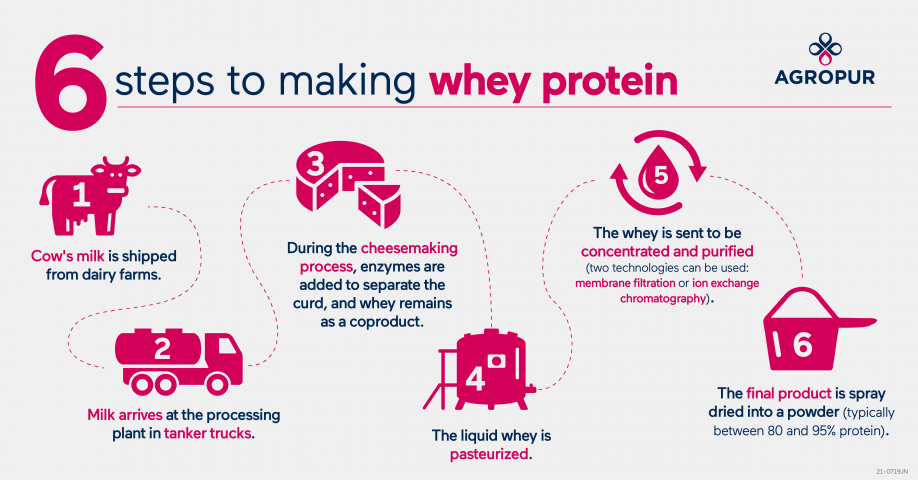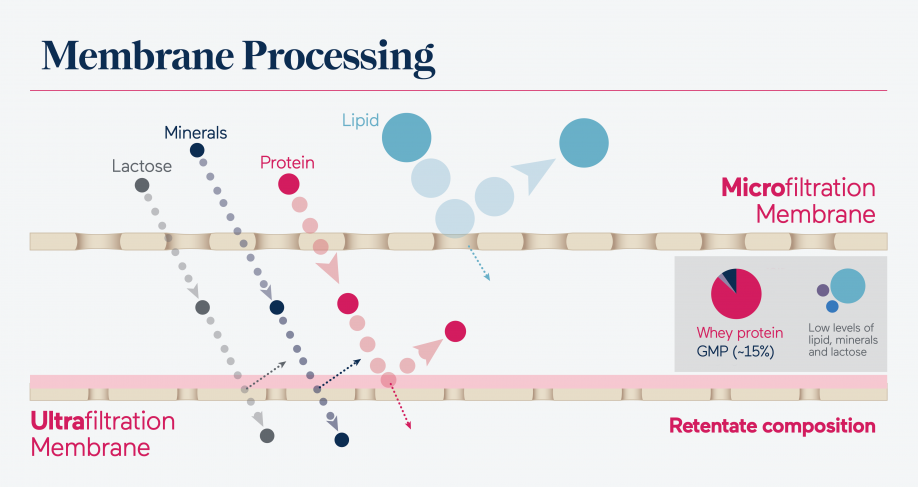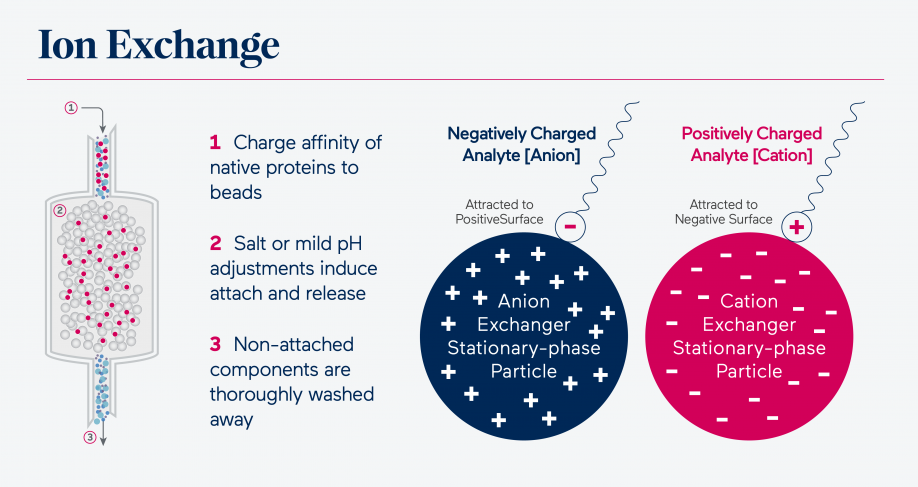If you head to your local supermarket like Kroger or Walmart, you might see big cartons labeled “Whey Protein”. If you’ve ever purchased one of these and opened it, you’ll find fine powder inside. Many products advertise whey protein for athletics, but what does it really do and is it even effective?
What is whey protein?
Whey protein, as you can assume from the name, comes from whey, the watery part of the milk that separates from the curd during the process of making cheese. The proteins in this whey are concentrated and isolated and later used in whey protein powder.The process of isolating whey protein is not very complicated. Two methods can be used: Membrane Filtration and Ion Exchange Technology.
Membrane Filtration
The whey passes through a semipermeable membrane (only certain materials can pass through). The whey protein stays in the middle of the membrane, while the other molecules remain outside both sides of the membrane.
Ion exchange
The whey passes through a column that separates the proteins based on their charge.
Is it effective?
Results from a few studies show that whey protein can assist with weight loss, help with athletic performance, lower blood pressure, and lower cholesterol. Many studies on whey protein have not been conducted yet, so the results of these studies should be taken with a grain of salt.
Studies have also shown that whey protein has side effects if consumed in high doses. Some of these side effects are stomach pains, cramps, reduced appetite, nausea, headache, fatigue, and even acne.
With the results of these studies, it is safe to say that consuming whey protein to lose fat and gain muscle is entirely fine. However, you still should be careful of how much you’re eating!



